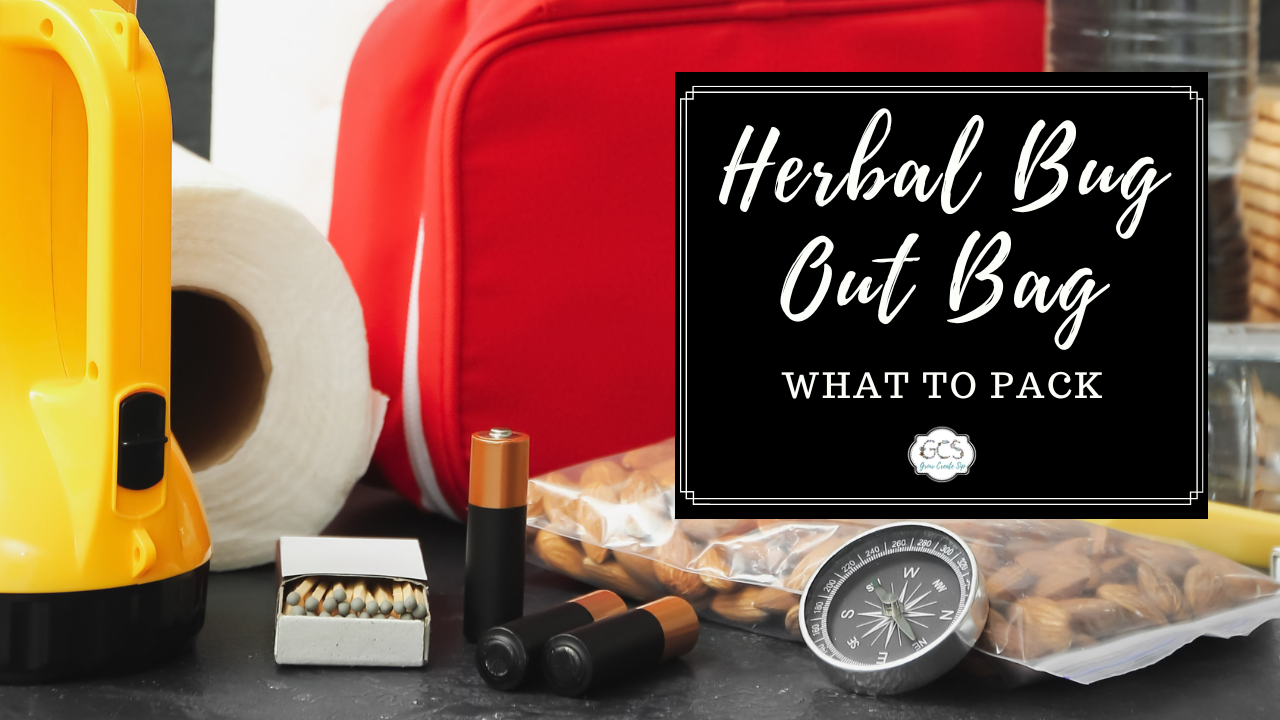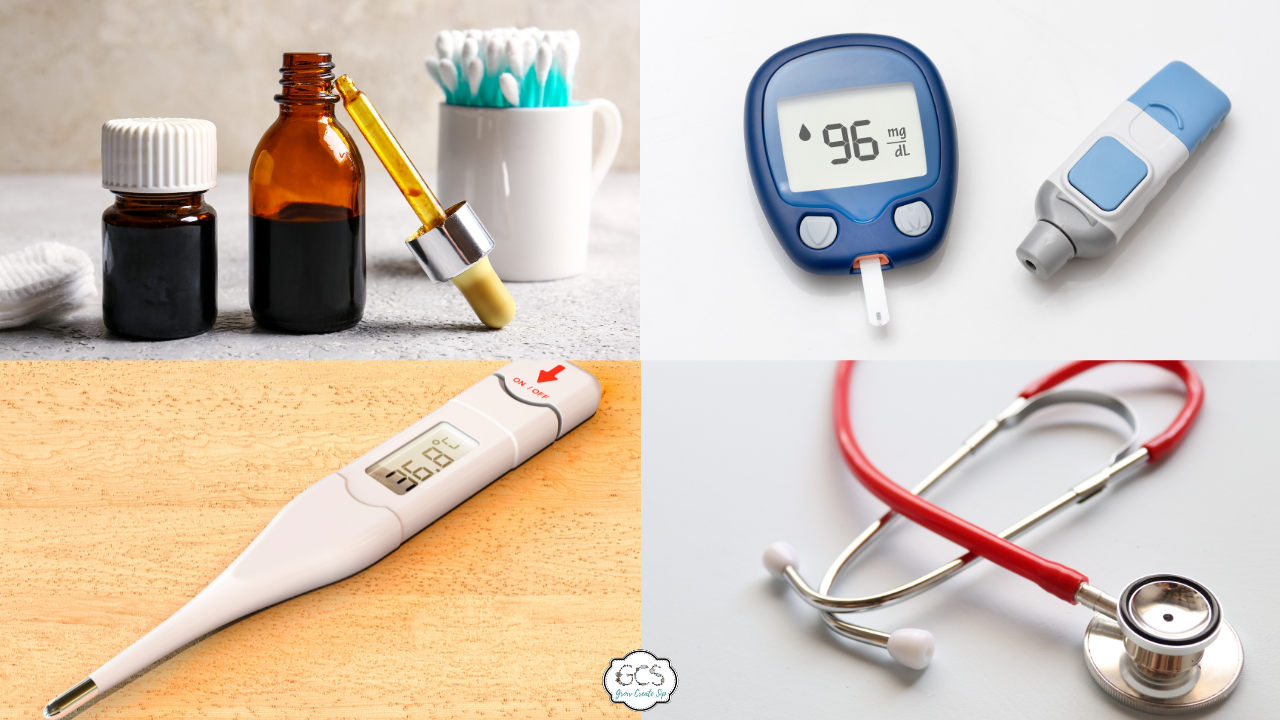Herbal Bug Out Bag List: What to Pack
Mar 11, 2025
I’ve always been an advocate of taking care of our own health as much as possible in a non-emergency situation (when there’s no extreme bleeding, you don’t have a broken bone, etc.). With too many personal experiences of doctors letting me down or prescribing me something that didn’t solve the root cause, natural health solutions have become so important to me!
When we were all at home during 2020, it became even more apparent that I needed to upgrade what I carried at home, so I took a class on vital signs and added diagnostic tools to our home and bug out bag list. This meant we could treat ourselves at home as much as possible when the hospitals were full, and we were under lockdown. We’d also have important tools ready to go if there was an emergency.
Not long ago, our ancestors were often in the middle of nowhere, and it could mean life or death to have the right knowledge and tools. It is always good to be prepared with knowledge and bug out bag essentials in case an emergency situation, or even a natural disaster, should arise. We may even be able to help our friends, family, and neighbors!
If you’re wondering what is a bug out bag, we’re here to help! Our bug out bag list will help you figure out the best items to add to your own bag, including our favorite herbs and salves. If you know what to put in a bug out bag ahead of time, you can have peace of mind knowing you’re already one step ahead of any possible emergency.

The Legal Stuff
This blog is provided by St. Fiacre's Farm LLC for informational purposes only. It does not constitute medical advice, and you should always seek the advice of a qualified healthcare provider for any medical questions or concerns.These statements have not been evaluated by the Food and Drug Administration. This product is not intended to diagnose, treat, cure, or prevent any disease. Please note that we may earn a small commission on any purchases you make through our affiliate links, at no additional cost to you. Thank you for your support!
What is a Bug Out Bag?
A bug out bag is a bag that you’d take with you if you suddenly had to leave your home because of a wildfire, earthquake, or other emergency. It’s also something you could take if you were hiking in the woods for days or weeks.
We’ve had wildfires near our place in the past and can’t emphasize enough just how important it is to be prepared for any type of situation. It’s common for a typical bug out bag list to include survival-type meals, flashlights, batteries, and an emergency radio. These supplies, as well as herbal medicine supplies, can come in handy in a pinch.
The term “bug out bag” comes from military slang, as soldiers would need to retreat or “bug out” in certain dangerous situations. It is essentially a backpack you would keep only for grabbing in an emergency when you need to leave your home.
Bug Out Bag Essentials: 7 Basic Supplies to Include
Now that we’ve covered what a bug out bag is, let’s talk about some of the basics that you should be sure to include in yours:
- Food: Make sure you have at least 3 days worth of non-perishable food for each person in your family. Freeze-dried food is a simple but effective option.
- Water & Filter: A small water bottle or two filled along with a travel water filter to be able to replenish with.
- First Aid: Basic first aid supplies are essential for any emergency bag.
- Lighting and Communication: Batteries, radios, light sticks, lanterns, and candles are some of the different options you could include in your bag.
- Tools and Gear: It’s a good idea to be prepared with survival gear, such as a multi-purpose tool and rope.
- Clothing: Have extra clothes on hand in case you need to be away from home for a while.
- BONUS! Bedding and Shelter: Pack a tent, sleeping bags, and blankets so that you can be comfortable and safe while away from home.

Our Herbal Bug Out Bag List
In addition to the basics, here are some other specific bug out bag essentials that we like to pack, including a variety of herbal medicine!
Bandages
Small and large adhesive bandages are a must-have in your bag. They’re super versatile, compact, and easy to store, and make a great temporary cover for minor wounds. Also make sure you have some ACE bandages available for things like wrapping knees, wrists and ankles. Also, I'll include here a sling for the arm. You never know when you might need them!
Steri-Strips
Steri-strips are excellent for closing up small, shallow wounds — which helps them heal while reducing the risk of infection. What we love most about steri-strips is they can be left on a cut for quite some time. They don’t need to be changed as often as traditional bandages.
Gauze
We always keep both small and large gauze pads in our bag to cover injuries as needed. Protecting open wounds from dirt and bacteria is essential for preventing infection and promoting proper healing. Plus, gauze also helps any applied salves absorb effectively, ensuring they actually penetrate the cut or scrape to do their job!
Cohesive Bandage a.k.a. Vet Wrap
This sticky tape-like bandage goes around splints. It can be used for compression or general wrapping and support for wounds.
Wound Cleaning Supplies
Not only are you going to want a way to heal wounds and close them off, but, and foremost, you are going to want a way to safely clean them. Make sure to also have some form of antiseptic such as tea tree essential oil, witch hazel, and/or hydrogen, and iodine.
Salves and Balms
Herbal salves and balms are bug out bag essentials that can be used on cuts, scrapes, abrasions, bug bites, stings, and small wounds, as well as to stop minor bleeding.
- Calendula salve will lock in hydration and will help when applied on cuts or scrapes.
- Plantain salve can be used to soothe bug bites, stings, scrapes, and small wounds as well as to stop minor bleeding.
- Arnica salve fights against muscle soreness and can also be used to treat bruises or bumps.

Emergency Herbal Tinctures
- Cayenne is known for its pain-relieving properties (Source). Cayenne tincture can be used for heart issues while waiting for an ambulance. This joint and back salve is made from olive oil and cayenne, resulting in a soothing sensation.
- Yarrow has the ability to reduce pain and inflammation as well as boost digestive health (Source). With a pack of our yarrow seeds, you can grow this helpful herb in your own garden and turn it into yarrow powder or tincture, which can be put on wounds to stop bleeding.
- Lemon balm has a calming effect (Source). Use organic lemon balm to make lemon balm tincture and glycerite. Lemon balm can be used to calm nerves aftershock. Lemon balm glycerite is especially good for kids to use. As we always say, "lemon balm brings calm."
- Peppermint or digestive tincture helps relieve upset tummies and reduces the effects of food poisoning.
- Valerian, California poppies, and cramp bark are among some of the best natural pain relievers (Source, Source, & Source).
Diagnostic Tools
Our bug out bag list would be incomplete without tools. The ability to monitor your own health is so important, especially during high-stress situations like emergencies. Some diagnostic tools that we always carry in our bug out bag are a blood sugar monitor, stethoscope, blood pressure monitor, and a pulse oximeter (the heart rate tool that clamps onto the finger). Here is my full list of options to have in your house or your go bag:
- thermometer
- stethoscope
- blood pressure monitor
- pulse oximeter
- blood sugar monitor
- nebulizer
- otoscope (tool for looking into ears)
- blood pressure monitor (sphygmomanometer)
Bug Out Bag List Frequently Asked Questions
What kind of bag is best to use for a bug out bag?
A durable backpack that is easy to carry with you is the best choice for a bug out bag. Try to use a bag that has plenty of pockets and storage space so you can fit everything that you need.
What is the difference between a bug out bag and a go bag?
Go bags and bug out bags are both meant to hold essential items in case of emergency, but a go bag will usually be smaller and is best for shorter-term use. Most bug out bags are larger, will have more emergency supplies, and are meant to last a few days or longer.
How often should you check and update your bug out bag?
It’s a good idea to check on your bag every three months or so. You’ll want to check the expiration dates of any stored food items and also replace batteries if needed. Checking your bag regularly is also the best way to ensure that you make any necessary changes as needed.
When Leaving is Not a Choice
Deciding what to put in a bug out bag is an important decision, but choosing items with care is the best thing that you can do to be prepared in case of an emergency! After all you only have so much space and so the essentials are essential.
We recommend always starting with basics like food, water, and first aid supplies, then adding in herbal medicine products like salves and balms for natural health benefits. If you want to add another salve to your bug out bag list, be sure to download our FREE Secret Salve Recipes so that you can make your own at home.
What is an essential bug out bag that you want to add to your list next?
Read More About Creating Your Own Herbal Medicines
- D.I.Y. Natural Cough Drop Recipe
- Acid Reflux Tea Recipe
- Fire Cider Benefits & Protocol for Home Herbalists
- How to Make Herbal Tinctures
- How to Use Herbs Safely + Monograph Guide
- D.I.Y. Bug Bite Relief Salve

















